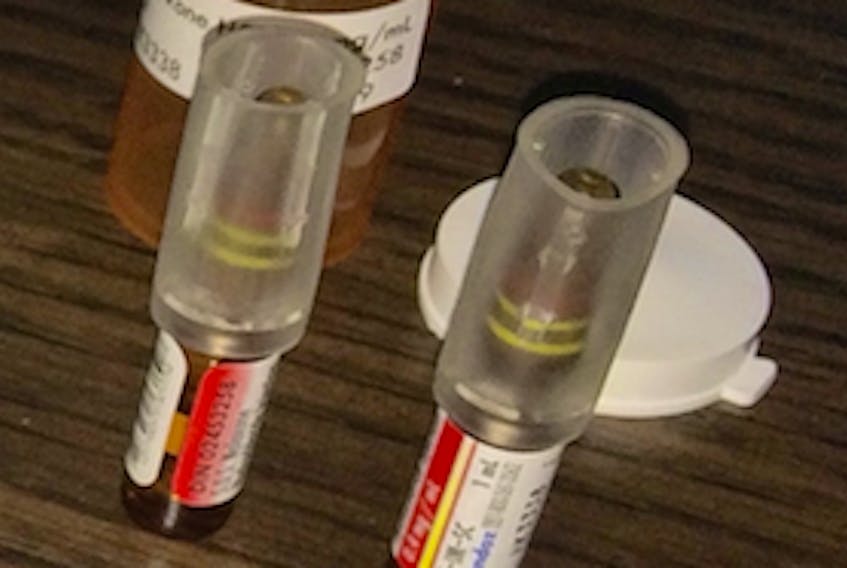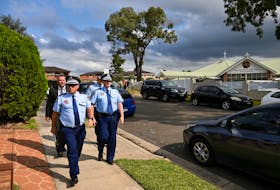Nova Scotia health and justice officials are getting federal help to expand the fight against opioid overdoses, which have claimed the lives of an average of 60 people in the province each year for the last seven years.
A Public Health Agency of Canada employee hasbeen working with the provincial medical examiner’s office for the past two years setting up a surveillance program to track the number of deaths from opioid overdose in the province.
The federal government recently approved a one-year extension for the public health officer to expand the program to begin tracking opioid overdoses that don’t result in death, but present at provincial emergency rooms or to paramedics.
The work is also expected to gather informationon the factors that put people at increased risk of an overdose.
The federal government also sent an additional employee to help the province adapt its tracking program to seek patterns that might connect other fatalities in the province.
Dr. Robert Strang, the province’s chief medical officer of
health, said the opioid overdose tracking system is regularly updated and publicly available, but officials need more details.
“We have good surveillance on overdose deaths but we need more than that,” he said. “We need to be looking at overdoses that don’t result in death . . . and then we need to look at what are the causal factors.”
Having a federal public health officer on hand helps Nova Scotia connect with other provinces and the federal government on a strategy to deal with what’s been called an opioid crisis.
Strang said that, farther west, provincial officials have been dealing with an increasing number of deaths from illicit fentanyl, a super-powerful opioid.
Some of that has been found in Nova Scotia, he said, but the majority of opioid deaths here are a result of over-prescribing more common drugs by doctors.
A recent report from the Canadian Institute for Health Information found that the amount of opioids being prescribed in the province is going down while the number of prescriptions has risen.
Strang said that’s moving in the right direction because it means doctors are exerting some control over the amount of drugs leaving pharmacies and are seeing patients more often.
“But we also have to remember that for some people with chronic pain, that they need to be sustained on their current level
of opioids, even though they may be above the current guidelines,” he said.
“Because if they don’t receive those opioids, they’re going to go to the street for a replacement source, and that will just put them at significantly increased risk of overdose because of the risk of contamination.”
Until the opioid crisis gained wide recognition, the medical examiner’s office in Nova Scotia — and those in other provinces — didn’t have the capacity to track patterns, said Strang.
Medical examiners’ and coroners’ offices simply weren’t set up for it, he said.
“Until we got the epidemiologist in the ME’s office, we didn’t know or didn’t see the pattern that for a number of years we’ve had these 60 deaths a year (from opioid overdoses) that we were aware of,” said Strang. “So that in itself, the 60 to me was a shock that that was the extent of the problem we had.”
That’s why the federal government is helping to adapt the opioid overdose surveillance model to find other patterns that may be occurring but haven’t yet been detected, he said.
The opioid tracking system has since helped raise awareness of the seriousness of the problem within the health industry, government and the public, Strang said.
Since 2016, the province has provided naloxone kits to harm reduction organizations, first responders, and police and corrections officials, and provided operational funding for harm reduction organizations in Halifax, Sydney and Truro.
Naloxone is a drug that blocks or reverses the effects of opioids. The kits look like a personal toiletries pouch that contains syringes, rubber gloves, an instruction sheet, a prescription card and two vials of naloxone.
Strang said while the opioid overdose tracking system doesn’t seem to have reduced the number of deaths yet, it’s likely the naloxone kits have kept that number from climbing.
Cindy MacIsaac, executive director of Direction 180 in Halifax, said she didn’t have exact numbers on Tuesday, but more than 70 people in Nova Scotia are still alive thanks to naloxone kits handed out over the last two years.
Staff at the non-profit methadone clinic put free kits into the hands of opioid users — and others who come into contact with them — offer training in their use, and often hear success stories from people who have reversed an opioid overdose, she said.
“We hear quite a few from people that have used the kits and they’ve been successful in saving lives,” MacIsaac said.
“One life saved is significant, in my opinion, but the fact that we have these reports of the kits being used with great success, it’s certainly a worthwhile investment — critical investment.”









